A bit of history
The first Burning Man took place in 1986: the future founders of the festival, Larry Harvey and Jerry James, burned a nearly three-metre-tall humanoid wooden sculpture on Baker Beach in San Francisco. According to legend, this was to mark the end of a romantic relationship. Thirty-five people came to watch. Later, these gatherings became an annual tradition and moved to the desert in Nevada.
Burning Man usually lasts nine days. The festival location turns into a temporary city where participants live and work in a closed community. They build large installations that are burned at the end. Previously, the installations were quite simple and mostly had human forms — hence the name of the festival. But now they are unpredictably diverse expressions on the border between science fiction and art, which require a lot of time and resources. So often, instead of a fiery finale, they get a second life in public spaces in different cities — for example, the sculptures Truth is Beauty and Lord Snort, first presented at Burning Man in the 2010s, now stand in various locations in California.
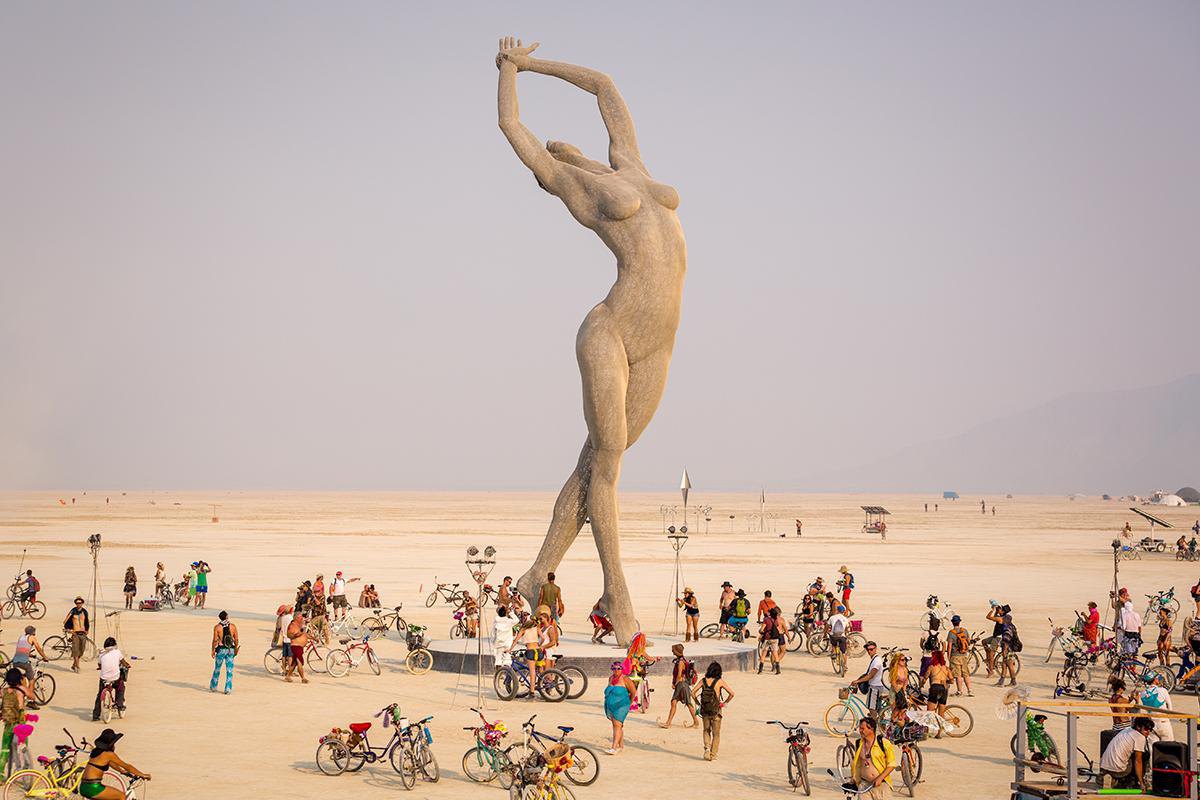
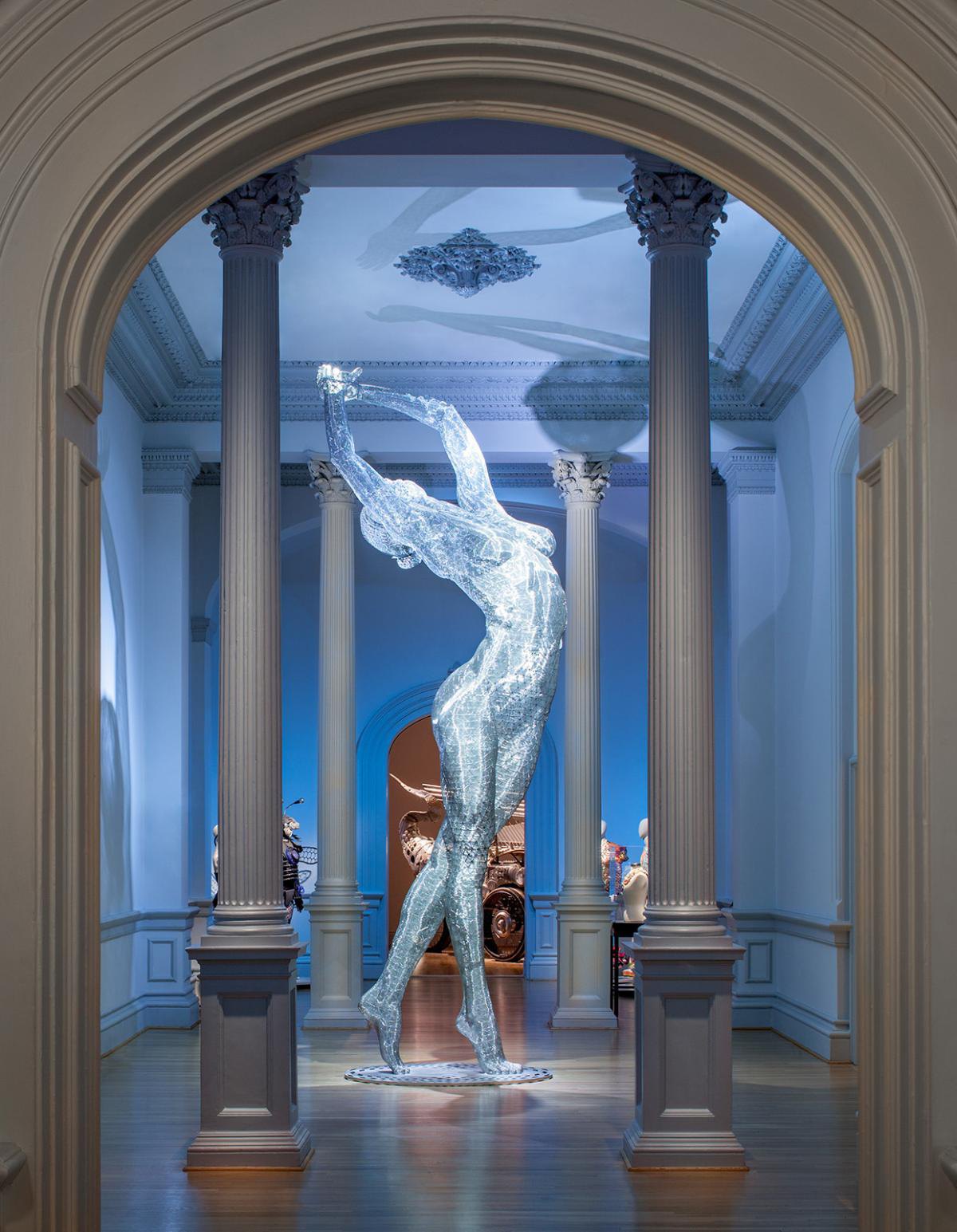
Burning Man has ten core principles (there are many jokes about a secret 11th). The word ‘radical’ appears three times in them, and this is what attracts thousands of visitors and spreads the fame of the festival. Some of the principles are more or less realistic, while others remain declarative:
— radical openness: anyone can participate (whoever pays a hefty ticket price);
— gifting: participants exchange gifts without expecting anything in return;
— rejection of commerce: no money is used within the festival (but more expensive camps offer better living conditions, with showers and refrigerators);
— radical self-reliance: everyone is responsible for themselves, providing water, food, and shelter;
— radical self-expression: participants are free to express themselves through art, costumes, performances (radicalism here can only be understood in terms of difference from the participants' everyday lives; there is generally no question of semantic or artistic radicalism);
— joint efforts: community support, collective projects, mutual assistance;
— civic responsibility: respect for laws and safety rules;
— leave no trace: participants clean up everything they bring (this principle is far from reality);
— active participation: everyone is involved in creating the festival experience, not just observing (in fact, according to eyewitnesses, there are quite a few observers);
— immediacy: the value of being in the moment, perceiving the experience ‘here and now’ (the involvement of participants in photo shoots and their focus on media and social networks undermines the sincerity of the desire to ‘be in the moment’).
Over its 40-year history, Burning Man has transformed from a community of marginalised individuals into a popular venue in certain circles. Its visitors are mostly people aged 25–45 from the United States and Europe with high levels of education and income. In terms of professional distribution, creative industries and IT workers predominate. In recent years, there have been more women than men. Paris Hilton, Leonardo DiCaprio, Lady Gaga, Mark Zuckerberg, and Elon Musk have all visited at various times. Musk was a regular guest at the festival until 2022, when he decided to focus on his political career. The technological solutions that Burning Man participants experiment with often find external applications: for example, the giant LED systems created at the festival were later borrowed by Eurovision, and the Wi-Fi network based on mesh technologies, tested back in the 2000s, began to be used during natural disasters.
Burning Man has gone beyond the boundaries of a single festival and has turned into a large network of events, each with its own specifics. In Ukraine, for example, Burning Man Decompression Kyiv (2018, VDNG) took place. However, participation in the original festival remains the number one goal for the Burner community.
Ukraine at Burning Man
Ukrainian participants have been presenting projects at Burning Man for at least 10 years; let's mention just a few of them. In 2015, Odesa sculptor Oleksandr Milov presented the installation Love — an image of two people trying to find understanding through their ‘inner children.’ Milov created this work with his own funds, which he had been saving to buy an apartment. A few years later, it was installed in Odesa.
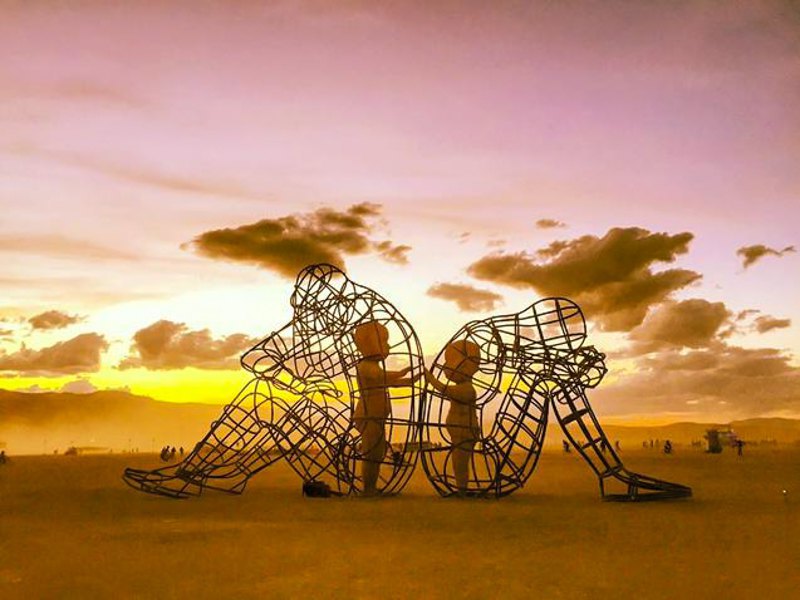
In 2016, builder and graduate of the CANactions urban planning school Oleksandr Ovsyanko organised an eco-town called Kurenivka at the festival, with domes painted in the Gogol Fest art squat. The central part of the town was called Maydan, and the Nastoyanka bar served horseradish vodka, lemongrass, kalganivka and rosehip tinctures. A huge straw spider was made for the temple, where burnings take place at the end of the festival. Later, the project community opened the Kurenivka Palace of Culture in Podil, Kyiv.

In 2019, Ukrainian participants presented several projects at once. The first was media art by the Artefact team: about 100 works by Ukrainian artists were broadcast on the PlayAlchemist pyramid, one of the largest objects of the festival. The second was the Catharsis installation: a 3-metre butterfly made of LEDs imitating Petrykivka painting and a ‘human’ heart printed on a 3D printer. There was also the installation Garden of Warm Children (metal ‘trees’ with clay figures of children and alcohol burners that give off heat) and the kinetic installation Cocoonap, created in collaboration between the Artmisto group from Dnipro and a team from Seattle.
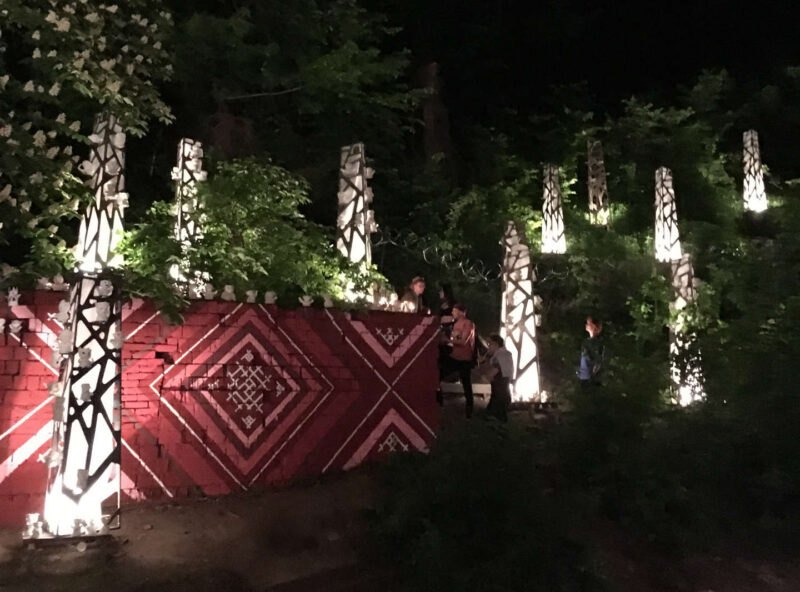
At Burning Man 2020, which was held online due to the pandemic, Valeriy Korshunov's virtual sculpture ARTEFACT: PROMETHEUS was shown, depicting a hand that brought fire to people and was a reference to Korshunov's mural A Look Into the Future at the Chernobyl Nuclear Power Plant. In 2021, also a pandemic year, the Merman installation was prepared (but not shown); it waited for its time until this year, which we will discuss a little later.
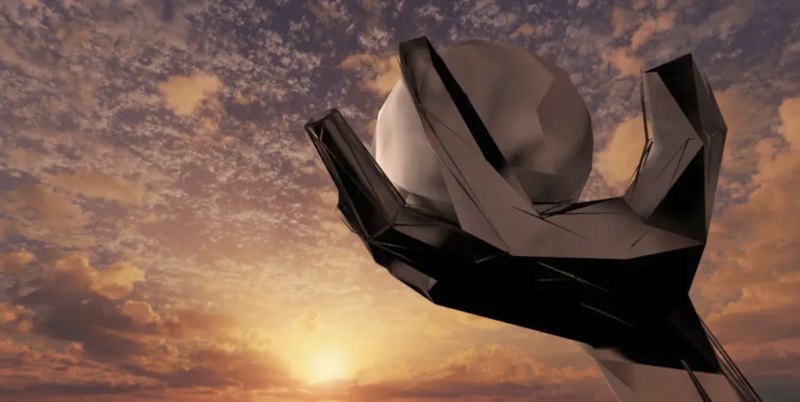
In 2022, after the start of the full-scale invasion, the focus of Ukrainian projects changed dramatically. In the first year of the war, the Ukrainian team presented an installation in the form of a huge trident and a tank with a sunflower in its gun barrel (which could be used to move around the festival grounds). In 2023, sculptor Oleksiy Say and architect Dana Kosmina presented the installation Phoenix — an 8-metre bird resembling a trident. Ukrainian burners also built the Hedgehog Temple — a 7-metre structure made of rusty metal in the shape of a hedgehog, covered with a pixelated mesh, inside which were real anti-tank hedgehogs. Stories of Ukrainians who were taken away by the war were placed on them.
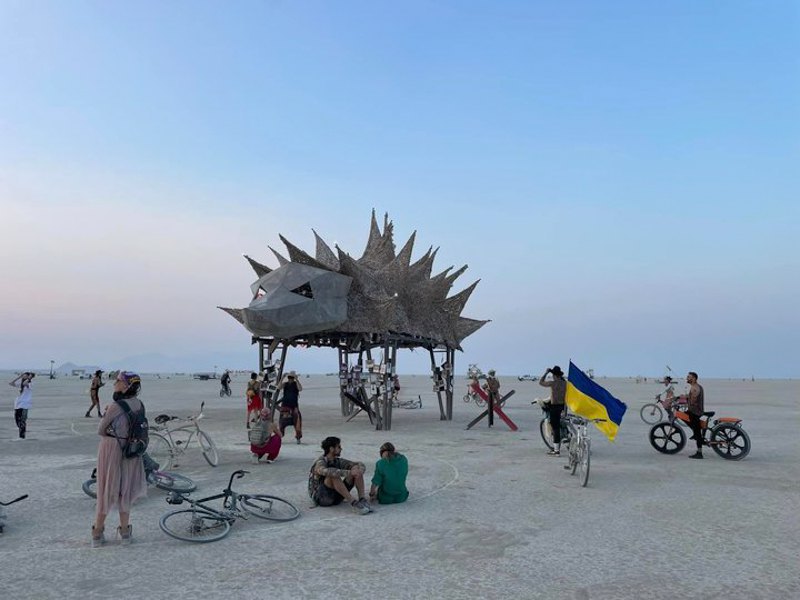
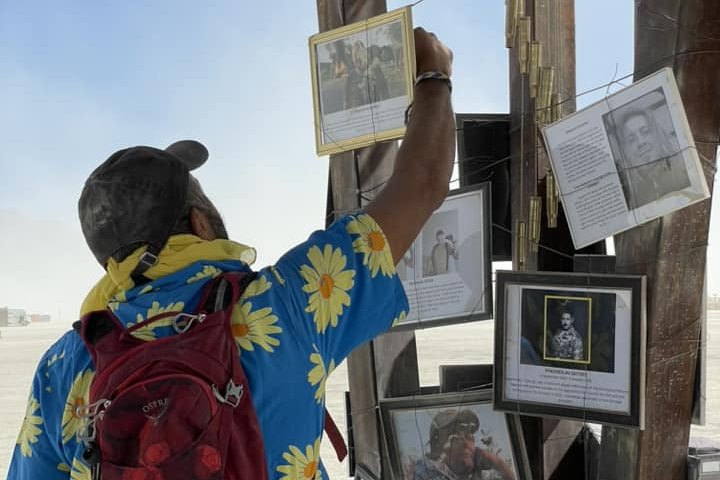
In 2024, huge letters spelling out ‘I'm fine’ by Oleksiy Say appeared in the desert, made up of shot-through street signs, solar panels, satellite antennas, and fences. Later, it was temporarily installed in Kyiv's Podil district, and Ukrposhta issued a stamp featuring this work.
Ukrainian projects at Burning Man 2025
This year, Ukrainians presented at least five projects at the festival.
Burning Man regular Oleksiy Say's Black Cloud received a preview in Kyiv: a giant installation weighing 7 tonnes and consisting of 45 ‘clouds’ was shown in June on Sofiyska Square. The idea was for the cloud to be a message to a relaxed world about the dangers that await those who ignore threats. The audio accompaniment imitated thunder (the sounds of explosions and shelling from the acoustic diary of Zaporizhzhya musician Denys Vasylyev). Ironically, the installation did not withstand the real weather — a hurricane in the Black Rock Desert destroyed it before the festival even opened. However, the organisers intend to restore the Cloud and show it in different countries, as previously planned.
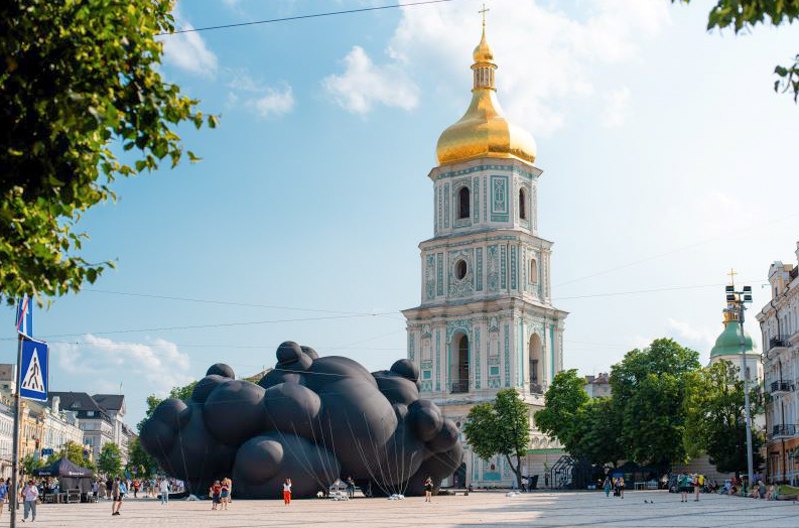
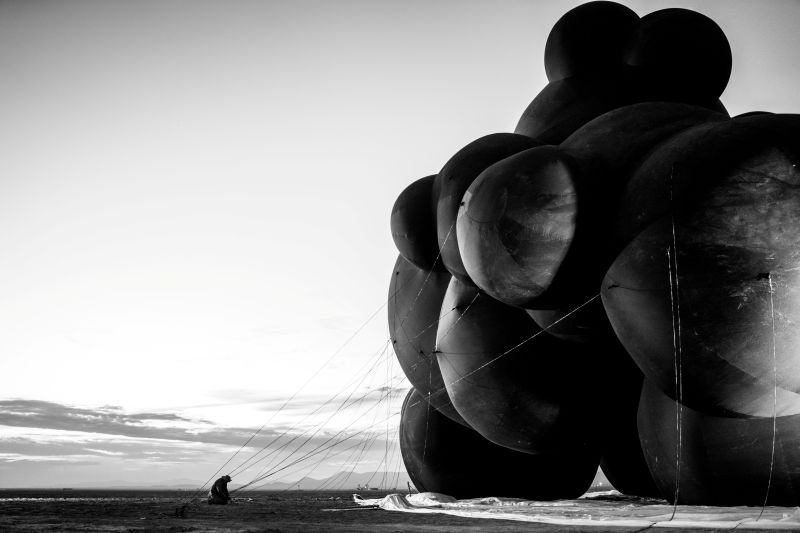
Light designer Mykola Kabluka's optical installation Point of Unityis a complex system of mirrors, lighting, and optical elements that react to changes in daylight. At night, 3,500 fibre optic points imitate the starry sky. The installation creates the illusion of boundless space and is positioned as a meditative space.
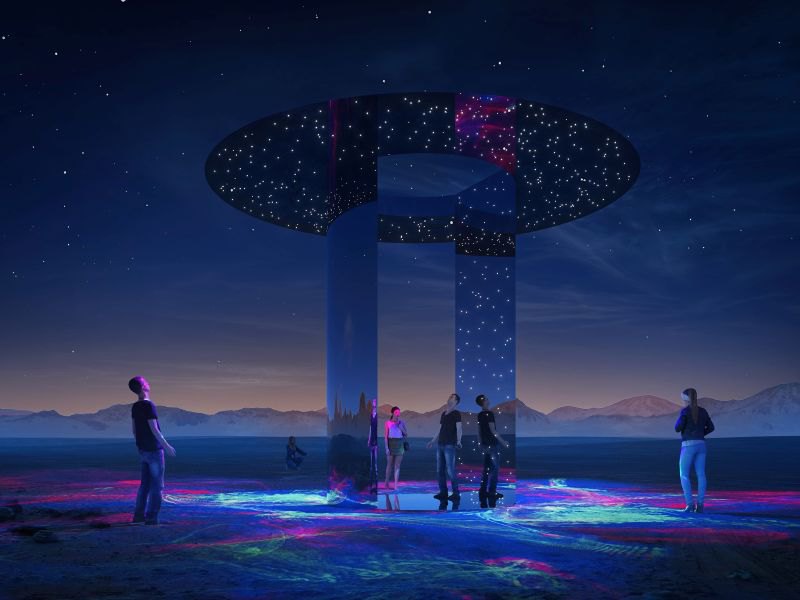
The Blue Bull is an art car created by a Ukrainian team that allows them to travel through the desert. The ten-metre mobile platform, based on the work of the same name by Mariya Prymachenko, is decorated with blue fur and light installations. At the same time, it is a stage where DJs and Ukrainian musicians perform, including Alina Pash, Vopli Vidopliassova, and others. The art car was threatened with the fate of the Black Cloud, but the team literally ‘pulled the bull by the tail’: they stretched cables along the tail of the installation and kept it intact and undamaged.
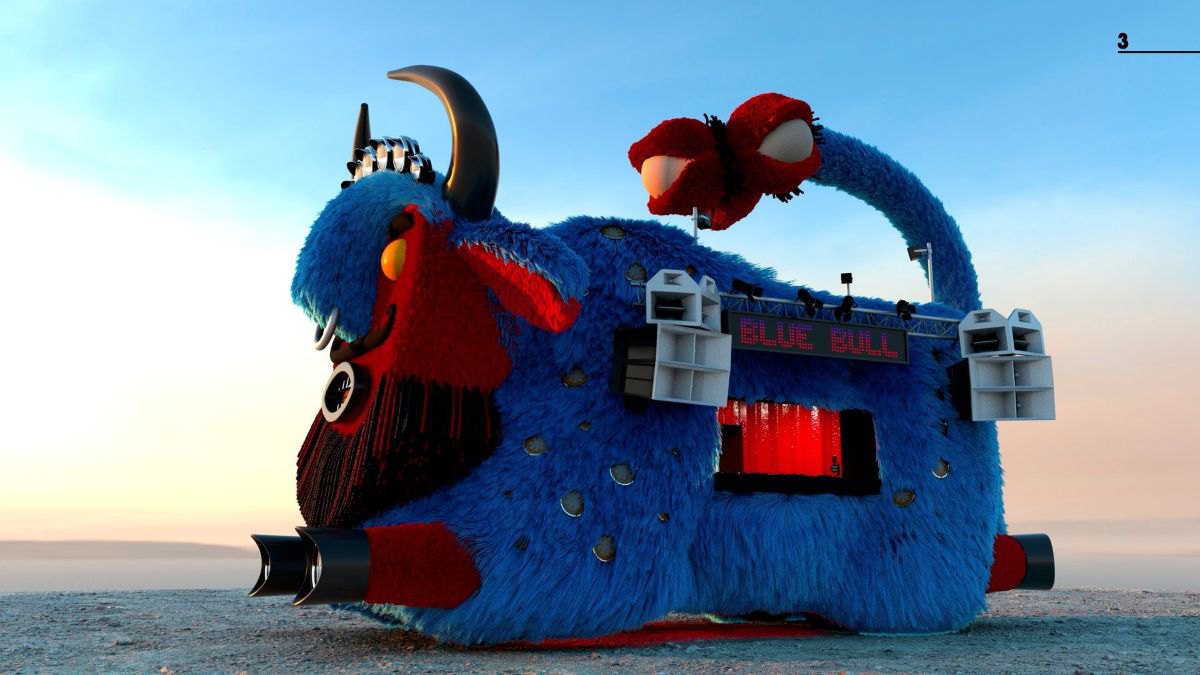
Death Conquered Death is a 9-metre wooden sculpture by sculptor Volodymyr Semkiv, created in partnership with Zenyk Art Gallery. It is based on the image of Niké of Samothrace, a symbol of just victory. After being displayed at Burning Man, the sculpture will be taken to various cities in the United States.
And finally, Merman is the most dramatic Ukrainian project, which was supposed to appear in Nevada back in 2021. It is a wooden sculpture weighing 2.5 tonnes and measuring 12 metres in height. Its author, Andriy Kropyvchenko, has already managed to display the work in various locations in Kyiv: on the Dnipro embankment, near the Arch, and on the territory of Unit.City. Finally, the sculpture has reached its destination.
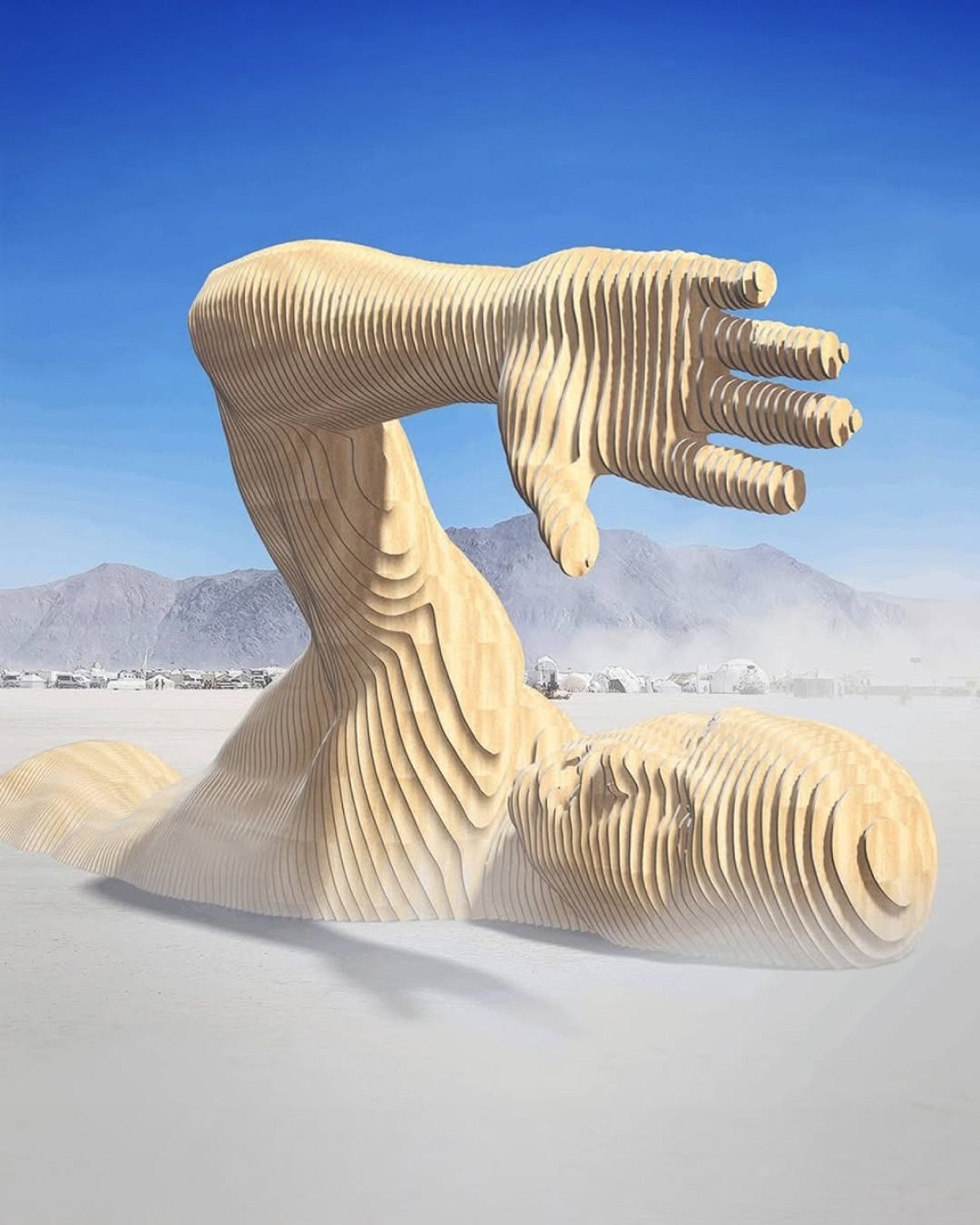
***
Ukrainian participants in the festival are increasingly talking about Burning Man as a platform for cultural diplomacy. Indeed, Ukraine's presence is growing, as is the number of media mentions of Ukrainian projects. However, cultural diplomacy is a slow process, and it certainly cannot be measured solely by the number of sporadic publications. So we are waiting for more profound changes initiated by these projects. After all, nothing stands still — just look at what was once a countercultural festival that has turned into the commercial event of the year.









